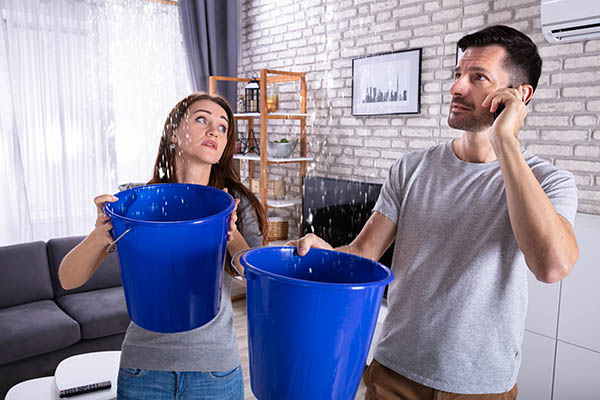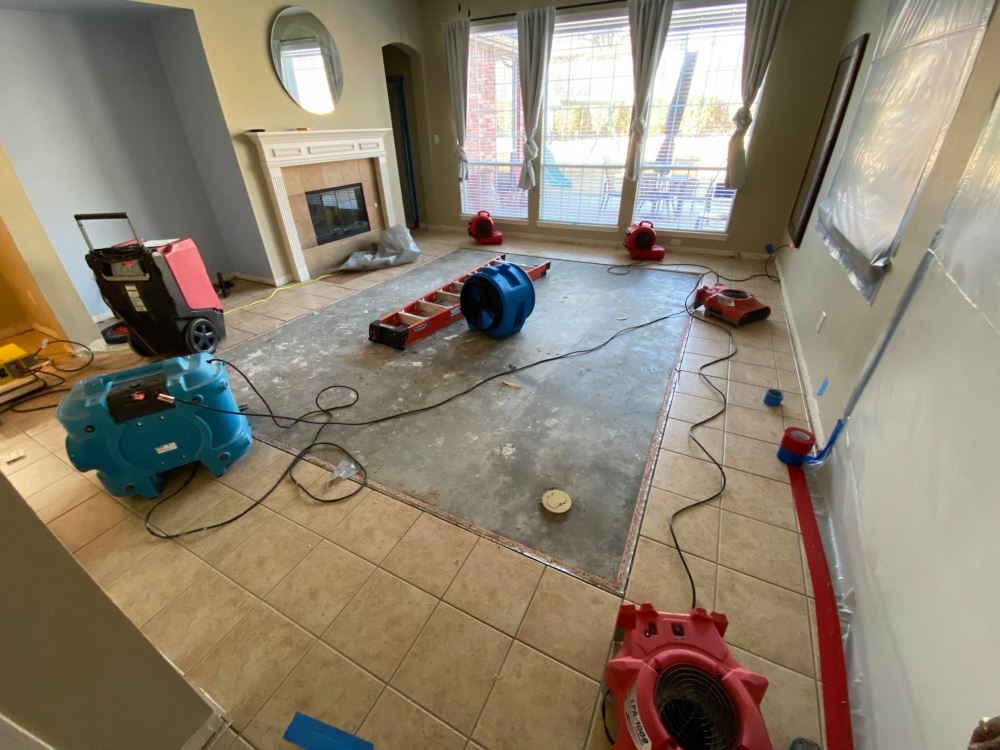How to compare Water Damage Restoration quotes and choose fairly
Wiki Article
Water Damage Restoration 101: Understanding the Process and Cost
Water damage can strike unexpectedly, leaving property owners in a state of confusion. Recognizing the repair process is essential for efficient recuperation. From assessing the damage to picking the right provider, each action affects the overall end result and price. Factors such as the kind of water damage and seriousness also play a considerable function. What are the details techniques used in reconstruction, and how can one get ready for potential costs?Sorts Of Water Damage

Preliminary Evaluation and Inspection

Water Removal Techniques
Following the initial analysis, efficient water extraction strategies are employed to minimize damage and avoid more concerns. These strategies entail making use of customized tools such as submersible pumps and industrial-grade vacuums - Water Damage Restoration. The selection of technique relies on the volume of water present and the kind of products influenced. For standing water, completely submersible pumps are normally utilized for rapid elimination, while vacuums are suitable for removing water from carpetings and upholstery. In addition, progressed methods like water extraction mats might be employed for hard-to-reach locations - Flood Cleanup Services. The goal is to eliminate as much water as feasible, lessening the potential for mold and mildew growth and architectural damage. Prompt and effective water removal is necessary in the overall water damage repair procedureDrying Out and Dehumidification Process
When the water extraction is total, the drying and dehumidification procedure becomes vital to restoring the affected area. This stage typically uses industrial-grade dehumidifiers and air movers to efficiently decrease dampness levels. The dehumidifiers draw in wet air, getting rid of excess humidity, while air movers distribute air to accelerate dissipation. Tracking devices is commonly used to track moisture and temperature levels, making sure perfect drying problems. The period of this process can vary depending on the level of the water damage and ecological aspects. It is necessary to completely completely dry all influenced materials, including walls, flooring, and furnishings, to stop mold growth and architectural damage. Appropriate implementation of this step is critical for a successful reconstruction result.Cleaning and Sterilizing Afflicted Locations
A comprehensive initial analysis and examination of impacted areas is important to identify contamination degrees once the drying process is total. Water Damage Restoration. Efficient cleansing methods and proper products must after that be used to get rid of particles and stains. Finally, sanitization and sanitation approaches are important to guarantee that dangerous pathogens are gotten rid of, bring back the room to a safe conditionPreliminary Analysis and Inspection
Before beginning any kind of remediation initiatives, a comprehensive preliminary analysis and examination of the affected areas are important for effective cleansing and sanitizing. This process entails identifying the degree of water damage, identifying the resource of the water breach, and examining the products affected. Inspectors commonly search for signs of mold growth, structural honesty issues, and damaged valuables. The assessment likewise consists of checking moisture levels utilizing customized equipment to assure no surprise water pockets remain, as these can result in further complications. Documenting the findings is crucial for preparing the next steps in the reconstruction process. A detailed initial analysis enables reconstruction specialists to create a targeted technique for effective cleansing and sterilizing, eventually minimizing damage and wellness dangers.Cleaning Strategies and Products
Effective cleansing and sterilizing of water-damaged areas require a selection of methods and products customized to the particular materials impacted. For porous surface areas like drywall and carpeting, removal methods are essential to get rid of excess wetness, adhered to by deep cleansing with specialized detergents. Non-porous materials such as tile or steel can be cleaned up utilizing commercial-grade cleaners that effectively remove impurities. Vapor cleansing is one more reliable technique, specifically for carpets and furniture, as it uses heats to get rid of microorganisms and mold (Flood Cleanup Services). Additionally, environment-friendly products are significantly prominent for their safety and security and efficacy - Water Damage Restoration. Eventually, selecting the proper cleansing methods and products not just guarantees immediate sanitation yet additionally aids in protecting against further damage and carcinogen connected with water breachSanitization and Disinfection Methods
When dealing with water damage, proper sanitization and disinfection techniques are important to guarantee the safety and security and health of the damaged environment. After initial cleansing, surfaces should be treated with proper anti-bacterials to remove virus, mold and mildew, and germs that grow in moist problems. Usual methods include the use of EPA-approved chemical disinfectants, which can be used through splashing or cleaning techniques. Furthermore, get more info ultraviolet (UV) light systems can effectively sterilize areas by counteracting bacteria without extreme chemicals. The selection of approach often depends on the kind of materials influenced and the extent of contamination. Ultimately, thorough sanitization not only brings back a risk-free space but also assists stop future wellness threats linked with remaining wetness and mold and mildew development.
Repairs and Restoration Options
Reviewing the damage brought on by water exposure is vital for identifying the proper repair services and reconstruction options. Homeowners may face various issues, consisting of harmed drywall, distorted flooring, and endangered architectural aspects. Depending upon the degree of the damage, repairs might entail changing areas of drywall, setting up brand-new flooring, or strengthening architectural beam of lights. In situations of serious damage, complete replacement of affected materials might be required. Furthermore, specialist restorers often suggest utilizing wetness meters to evaluate covert moisture degrees prior to selecting the finest course of activity. It is necessary to act promptly to avoid mold development and more degeneration. Selecting the right alternatives not just brings back the property yet also assures long-term security and functionality.Aspects Affecting Restoration Expenses

The extent of water damage directly impacts the reconstruction costs home owners can expect to incur. Variables such as the resource of the water, the duration of direct exposure, and the damaged products substantially influence prices. For example, clean water damage from a broken pipe is usually much less pricey to recover contrasted to damage brought on by sewer. In addition, the degree of contamination determines the need for specialized cleaning and disposal solutions, better raising expenditures. Geographic place likewise contributes, as local labor prices and schedule of remediation services can vary. The urgency of the reaction impacts expenses; quicker interventions generally lead to lower total costs by stopping more damage. Recognizing these variables is essential for home owners when approximating remediation expenses.
The three primary kinds of water damage are classified based on contamination levels: clean water, grey water, and black water. A detailed preliminary evaluation and evaluation are vital steps in the water damage restoration procedure. For standing water, submersible pumps are commonly used for fast elimination, while vacuums are ideal for drawing out water from carpets and furniture. The extent of water damage directly affects the restoration sets you back homeowners can anticipate to incur. Tidy water damage from a broken pipe is typically less pricey to restore compared to damage created by sewage.
Report this wiki page